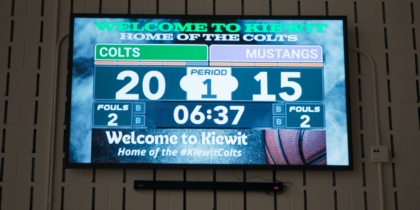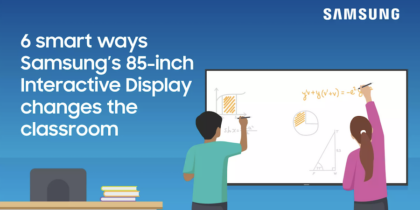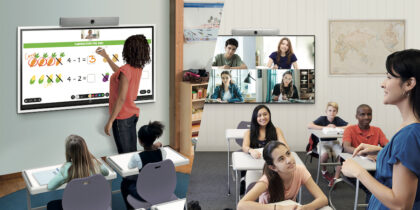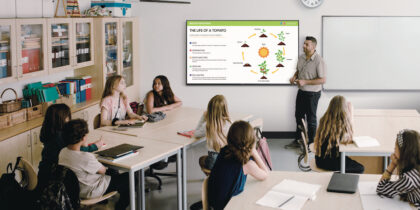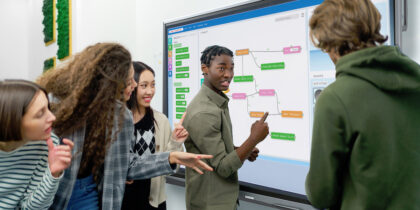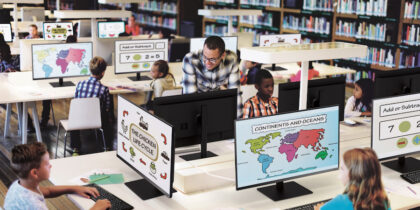Technology offers many educational benefits, one of which is the ability to easily adapt curriculum to accommodate different learning styles and abilities. Specifically, teachers can use tablets in the classroom to enhance their current differentiated instruction practices, providing educational content to students in a multitude of formats. By encouraging students to learn in the way that’s most comfortable for them, students can absorb and recall classroom information more readily.
The Prevalent Learning Styles
One well-researched method of categorization is the VARK model of student learning. Created by educational theorist Neil Fleming, this model groups learning styles into four categories: visual, auditory, reading and writing, and kinesthetic:
- Visual learners best grasp concepts and retain information when it is presented through charts, diagrams and photographs. This type of learner will likely find a concept map useful when organizing thoughts and research.
- Auditory learners prefer to hear descriptions of concepts and discuss ideas with their peers to further their understanding. These learners will enjoy lectures and presentations by guest speakers and fellow students.
- Learners with a reading and writing preference will learn best through text. Students with this learning preference will best demonstrate their learning through essays and papers.
- Kinesthetic learners need a tactile connection to their learning, working with manipulatives and physical representations of concepts. These students will gravitate toward real-world examples and simulations.
According to a 2014 study published in the Journal of Postgraduate Medicine, 87 percent of students fell into multiple categories, either shifting through the styles depending on the situation or simply holding a preference for two or more. Only 13 percent of students prefered one learning style.
How Technology Supports VARK
Before tablets became prevalent in the classroom, differentiation of instruction required that teachers either alternate types of lessons to ensure that some met each possible learning style or provide multiple learning resources for each lesson. However, tablets such as the Galaxy Tab 4 Education allow students to choose how to access the information presented by the teacher. These devices also allow pupils to find or create further resources that support their preferred learning styles.
Visual learners can use the graphics capabilities of their tablets to view videos, diagrams, illustrations, and photos related to key concepts. They can also use a stylus and a drawing program to diagram concepts that have been presented in a different learning style, converting it into something they can use for studying and review. Tablet-based mapping tools will also allow these students to take advantage of the technology to improve their learning.
Auditory learners can use audio features to read aloud text-based materials, including textbooks, primary documents, and research reports. Recording tools allow them to record notes and process their understanding verbally. A tablet with a reliable and fast internet connection can connect these students with experts to discuss concepts and further their understanding.
Learners who prefer reading and writing will enjoy speech-to-text features that convert audio files into text. They will also find useful the wealth of primary documents and other written materials online. A on-screen keyboard lets them use their tablet to compose text and summarize in-class discussion. Direct connectivity to a classroom printer, enabled by solutions such as Samsung School, will also allow them to print items immediately in case they want to interact with the written word on paper.
Finally, kinesthetic learners will appreciate the touch capabilities of tablets for schools because students can virtually interact with materials. Simulations and manipulatives will allow them to engage with even the most complicated topics, and video tutorials accessible online will guide a kinesthetic connection to their learning. These students can also use tablets to take their own photos of experiments or exhibits on field trips and share them with their peers.
With the integration of tablets in the classroom, differentiating instruction is easier than ever, reducing the stress burden on teachers and supporting improved learning outcomes. Tablets for education also enable teachers to accommodate for other differentiation needs beyond learning style, such as for students with special needs. Ultimately, tablets’ versatility and individualization will help one-to-one technology programs bring education to the next level.




